Abstract
The resistance to destruction of spores of Bacillus subtilis var. niger occluded in crystals of calcium carbonate and exposed to ethylene oxide and moist and dry heat was determined and compared with the destruction of unoccluded spores. Occluded spores could not be inactivated with ethylene oxide. Resistance to inactivation was approximately 900 and 9 times higher for occluded than for unoccluded spores subjected to moist and dry heat, respectively, at 121 C. The protective effect may be due either to the unavailability of oxygen for destruction by oxidation or to inhibition of the loss of essential cell constituents by vaporization. Evidence also implicates the crystal structure as a thermal conductivity barrier. Occluded spores retained viability over a 3-year period compared with unoccluded spores which decreased over 90% during this period. Occluded spores in insoluble materials are seldom encountered in the technology of sterilization, but could be the most critical factor in the sterilization of interplanetary vehicles. Entrapped spores in insoluble materials are usually difficult to detect, and are very stable as well as extremely resistant to destruction by heat and ethylene oxide.
Full text
PDF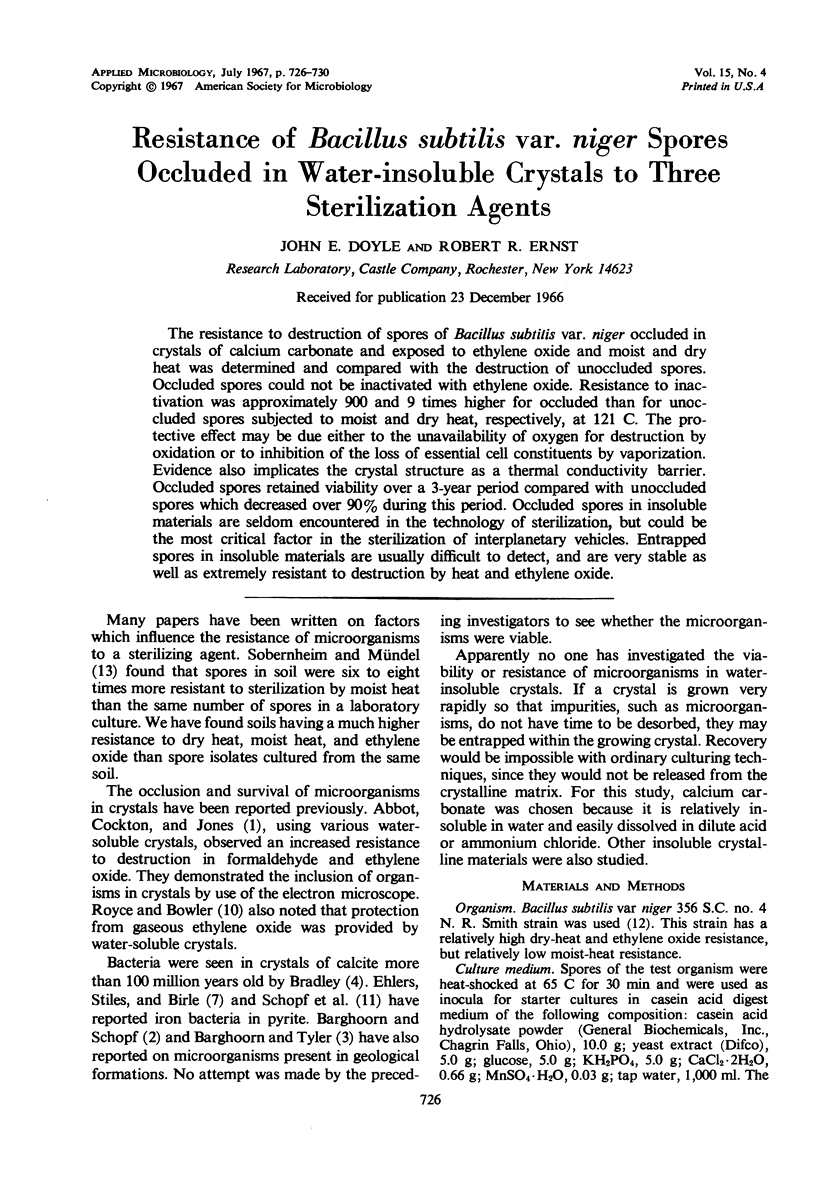
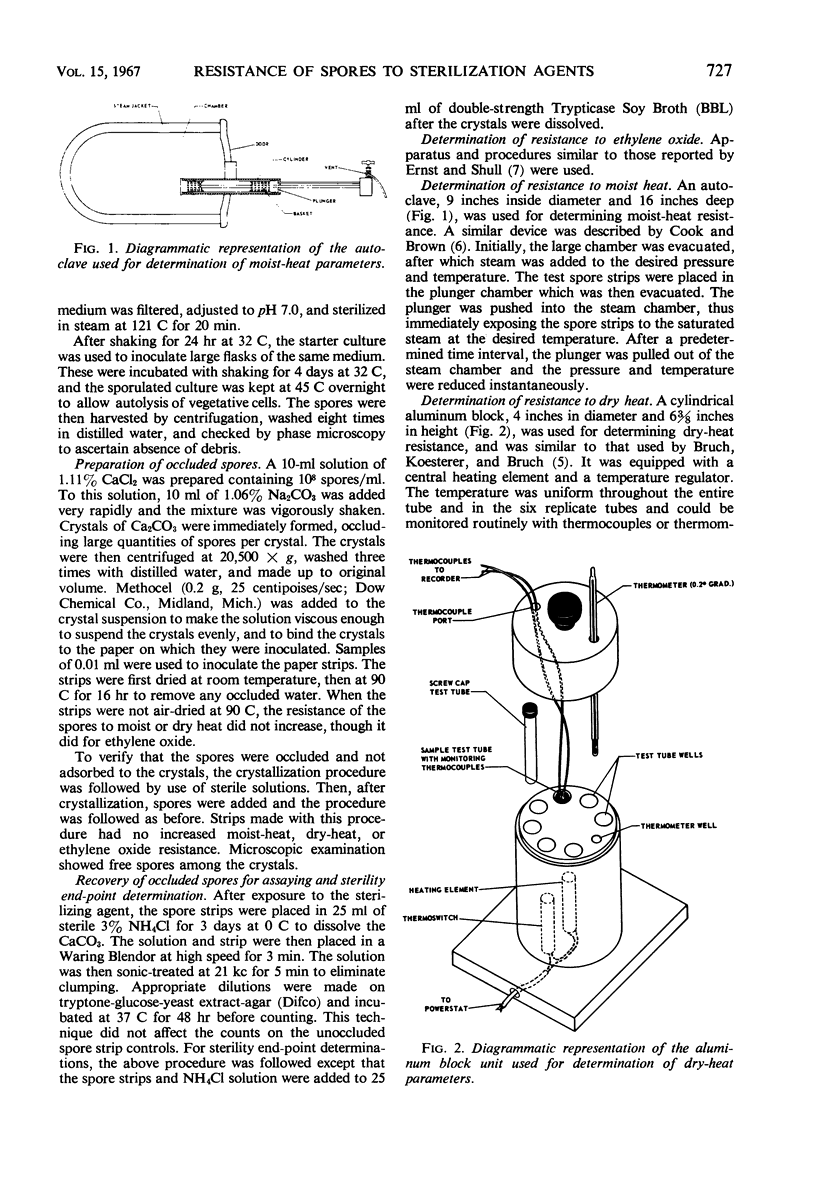
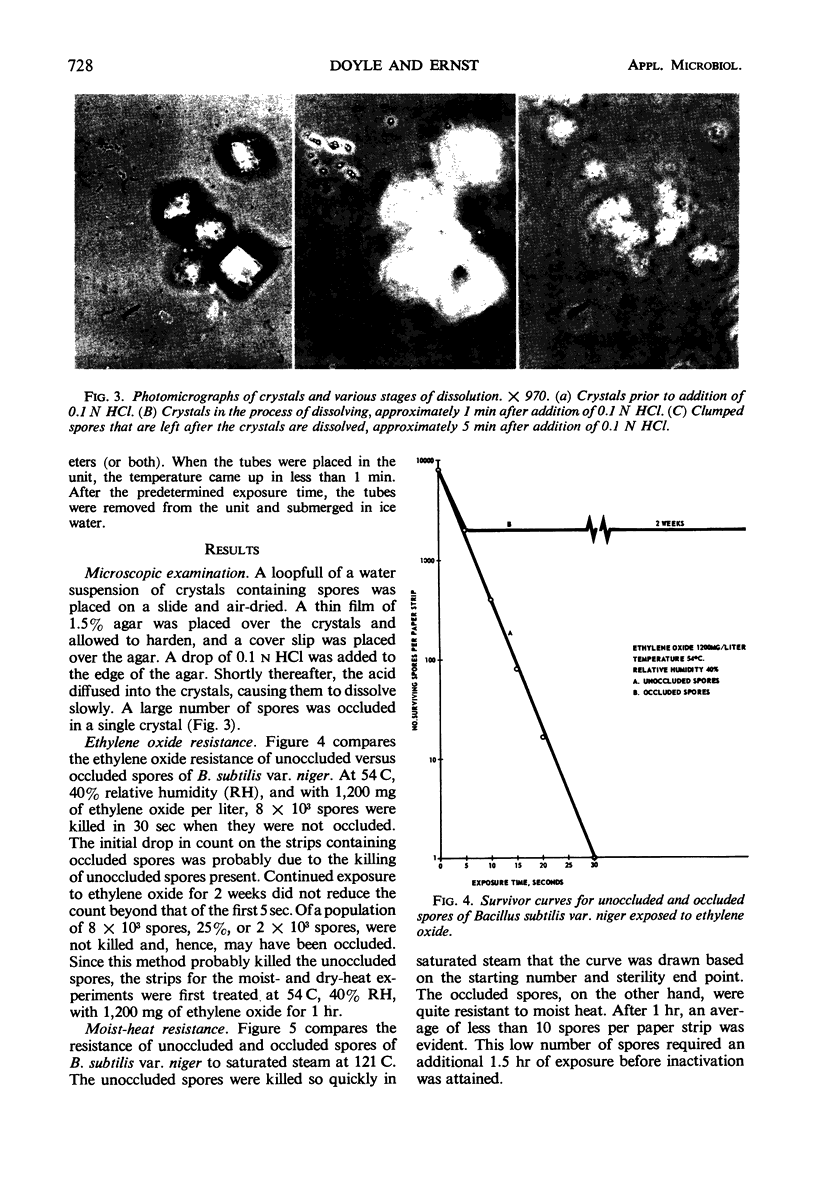
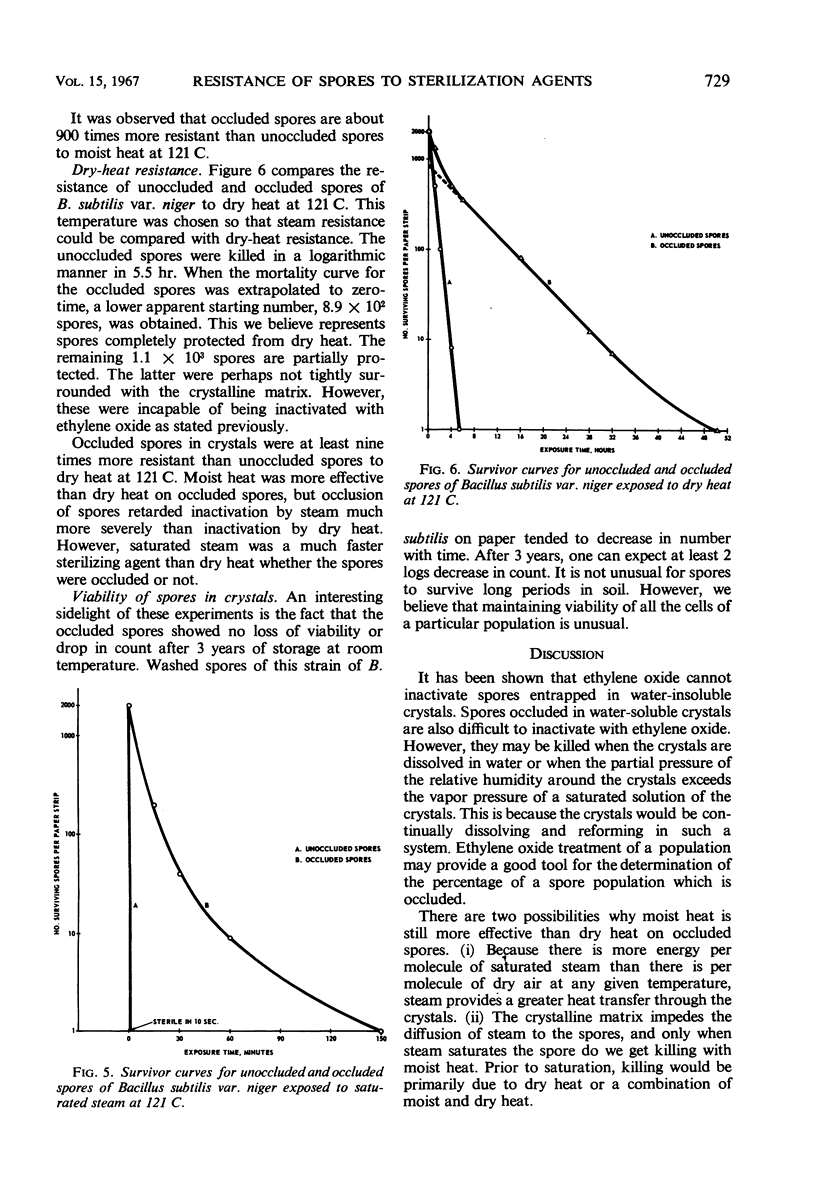
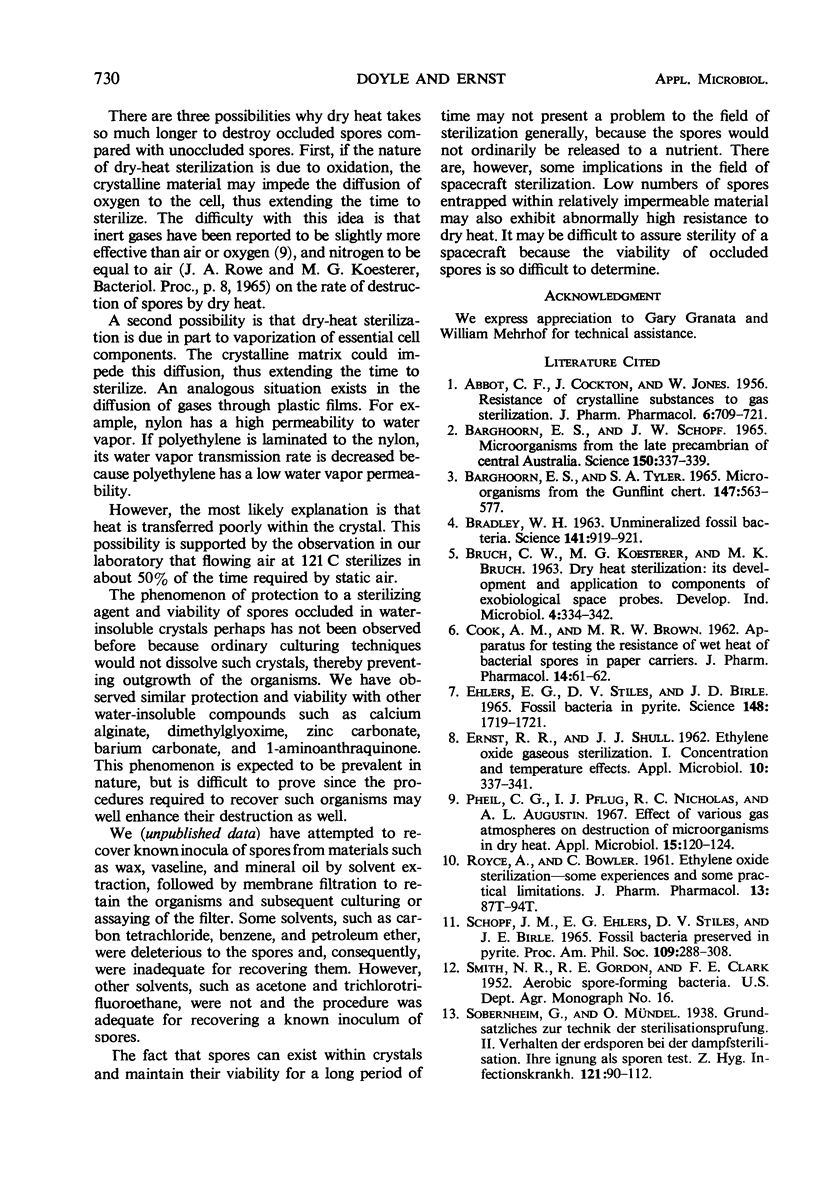
Images in this article
Selected References
These references are in PubMed. This may not be the complete list of references from this article.
- ABBOTT C. F., COCKTON J., JONES W. Resistance of crystalline substances to gas sterilisation. J Pharm Pharmacol. 1956 Oct;8(10):709–720. doi: 10.1111/j.2042-7158.1956.tb12202.x. [DOI] [PubMed] [Google Scholar]
- BRADLEY W. H. UNMINERALIZED FOSSIL BACTERIA. Science. 1963 Sep 6;141(3584):919–921. doi: 10.1126/science.141.3584.919. [DOI] [PubMed] [Google Scholar]
- Barghoorn E. S., Schopf J. W. Microorganisms from the Late Precambrian of Central Australia. Science. 1965 Oct 15;150(3694):337–339. doi: 10.1126/science.150.3694.337. [DOI] [PubMed] [Google Scholar]
- Barghoorn E. S., Tyler S. A. Microorganisms from the Gunflint Chert: These structurally preserved Precambrian fossils from Ontario are the most ancient organisms known. Science. 1965 Feb 5;147(3658):563–575. doi: 10.1126/science.147.3658.563. [DOI] [PubMed] [Google Scholar]
- COOK A. M., BROWN M. R. Apparatus for testing the resistance to wet heat of bacterial spores in paper carriers. J Pharm Pharmacol. 1962 Jan;14:61–62. doi: 10.1111/j.2042-7158.1962.tb11054.x. [DOI] [PubMed] [Google Scholar]
- ERNST R. R., SHULL J. J. Ethylene oxide gaseous sterilization. I. Concentration and temperature effects. Appl Microbiol. 1962 Jul;10:337–341. doi: 10.1128/am.10.4.337-341.1962. [DOI] [PMC free article] [PubMed] [Google Scholar]
- Ehlerg E. G., Stiles D. V., Birle J. D. Fossil Bacteria in Pyrite. Science. 1965 Jun 25;148(3678):1719–1721. doi: 10.1126/science.148.3678.1719. [DOI] [PubMed] [Google Scholar]
- Pheil C. G., Pflug I. J., Nicholas R. C., Augustin J. A. Effect of various gas atmospheres on destruction of microorganisms in dry heat. Appl Microbiol. 1967 Jan;15(1):120–124. doi: 10.1128/am.15.1.120-124.1967. [DOI] [PMC free article] [PubMed] [Google Scholar]




